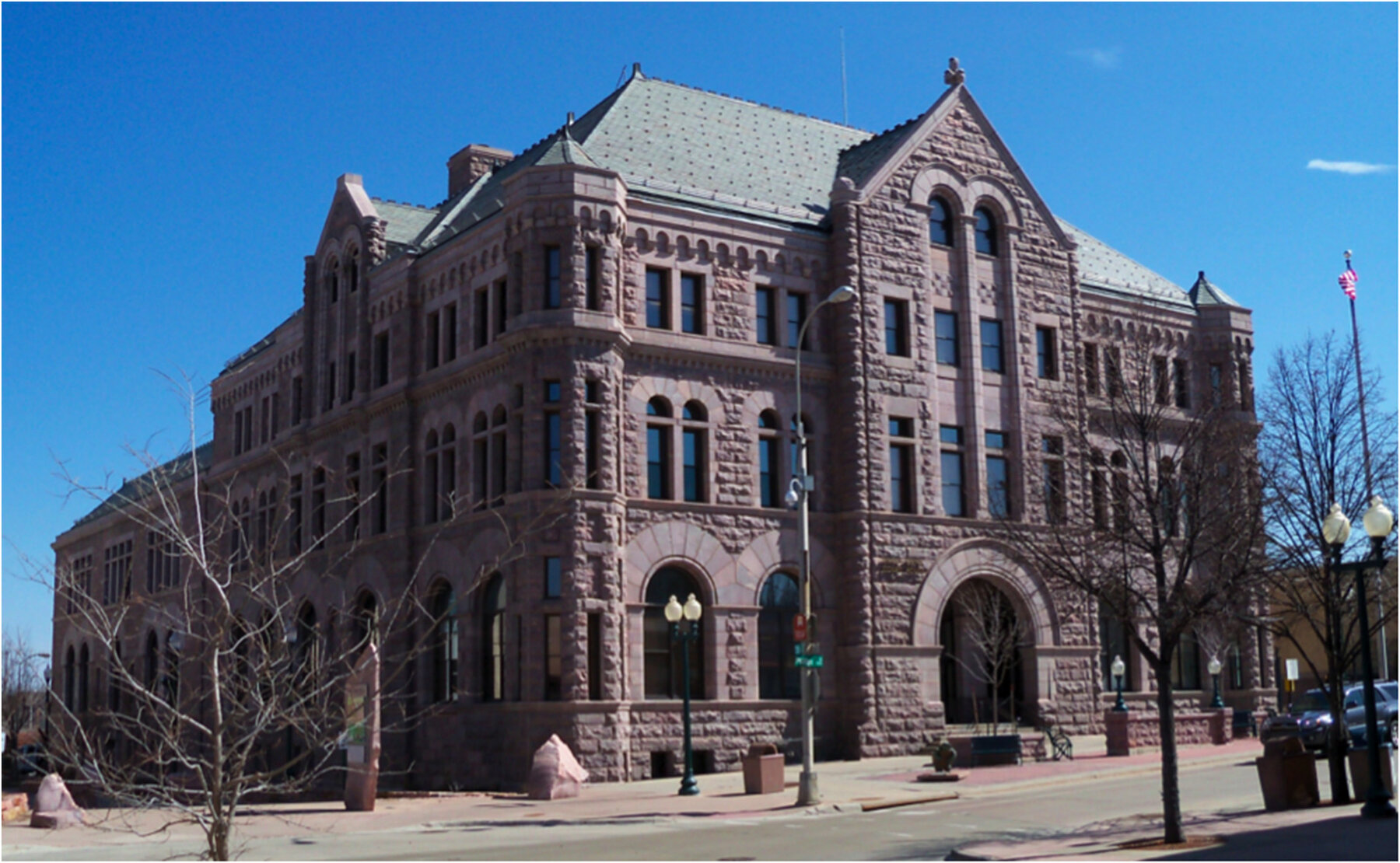Introductory note by James Fallows: Yesterday I discussed why the part of greater Sioux Falls that is visually least interesting, to put it politely — the expanse of fast food joints and big-box malls on the town’s periphery — is connected to a quite interesting part of the city’s economic history and current civic culture.
That in turn is connected to a theme I mentioned back in the first dispatch from this “East River” part of the Dakotas: Sioux Falls has made such a powerful and mostly positive impression on us largely because it so clearly represents a long-standing part of the essential American bargain. It is successful, and rough-edged — a contemporary City of Big Shoulders, with lots of its economic machinery displayed rather than tucked out of site. A century-plus ago, one aspect of its economic boom was its role as quickie-divorce center. A generation-plus ago, it put itself on the financial-services map when South Dakota eliminated usury laws and drew Citibank and other credit-card companies to set up headquarters in Sioux Falls. There will be more to say about that phase of the city’s history.
But in addition to the visible raw edges, like the huge slaughterhouse and the penitentiary that both sit right downtown, the city also has an extensive and remarkable architectural heritage. That is what John Tierney describes today, starting with the striking Richardson-style Romanesque buildings that define much of the look of downtown. The image at the top shows one of many buildings by the city’s most influential architect, Wallace L. Dow. It’s part of the state pen.
By John Tierney
It used to be that if you wanted to get a sense of what distant cities and towns looked like, you had to travel there yourself, view guidebooks and coffee-table photobooks, get hold of postcards, or endure friends’ slide shows and endless monologues. These days, it’s easy to learn the look of other places by turning to Google’s Street View, YouTube, and other Web resources.
But it’s still helpful, if you’re trying to get a sense of a city’s architectural style and its most treasured structures, to have someone curate a selection of buildings and sites for you. So, in that spirit, for many of the cities that Jim and Deb will be visiting for the American Futures project, we’ll provide an amateur’s guide to notable buildings in town. Some of these will be Fallows photos; most will be from the Web.
Sioux Falls is a terrific city to begin this exercise because it contains many beautiful buildings, over 65 of them on the National Register of Historic Places. Carolyn Torma, an expert on South Dakota’s architectural treasures, explains in a 1989 article in the journal South Dakota History, that many of the grand buildings in Sioux Falls were designed in the late nineteenth century by Wallace L. Dow and Joseph Schwarz, architects who “celebrated the picturesque and the romantic,” working in “richly ornamented and colorful styles.” Torma explains:
Both employed in many of their buildings rusticated or rock-faced Sioux quartzite [a red/pink quartzite quarried in abundance in the Sioux Falls region], round-arched Romanesque [Richardsonian] details, and irregular floor plans. Further, the picturesque styles of the era – Romanesque, Stick, Shingle, Italianate, Queen Anne, and Gothic Revival, to name a few – made little attempt to reproduce faithfully their historical sources. Instead, designs were bold, almost freehand, interpretations.
Let’s look at some of the best of those Romanesque buildings with Sioux quartzite:
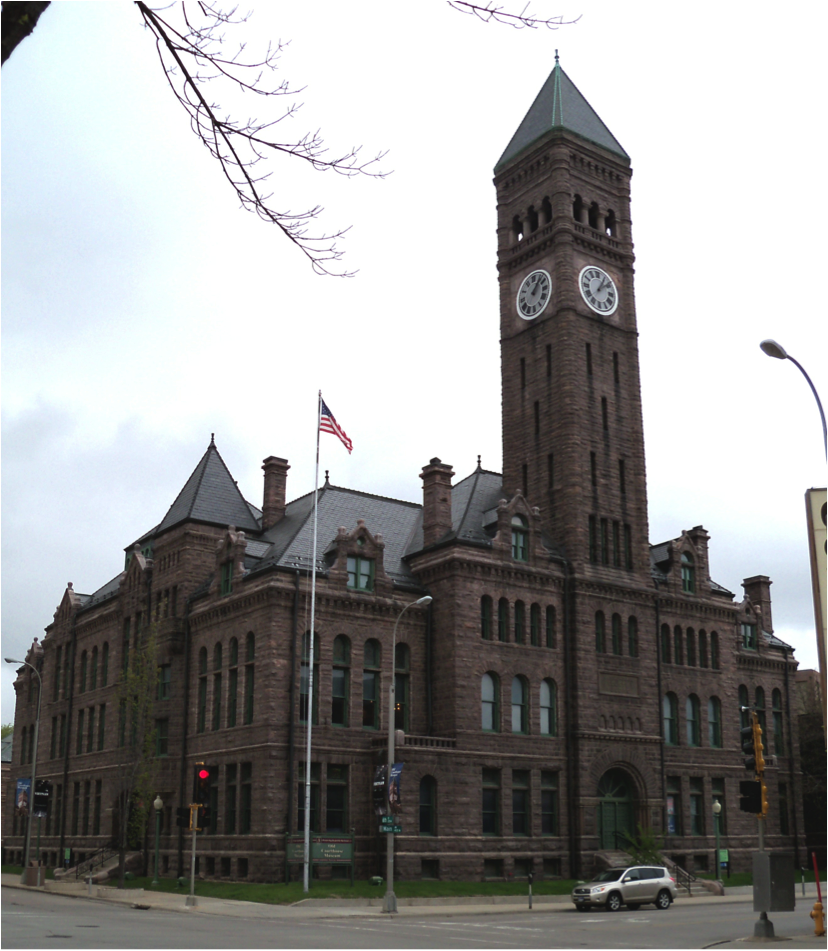
Old Minnehaha County Courthouse, Sioux Falls, SD
Architect: Wallace L. Dow
Style: Romanesque Revival
Date: 1893
More info: Converted into a museum in the 1970s.
Photo source: Wikimedia Commons

Federal Building and U.S. Courthouse, Sioux Falls, SD
Architect: Willoughby J. Edbrooke, with additions by James Knox Taylor (1911) and James A. Wetmore (1931)
Style: Romanesque Revival
Date: Constructed 1892-1895, 1911–1913, 1931
More info: Wikipedia
Photo source: Wikimedia Commons

Pettigrew and Tate Building, Sioux Falls, SD
Architect: Cross & Richard
Style: Romanesque Revival
Date: 1888-1889
Photo source: Wikimedia Commons
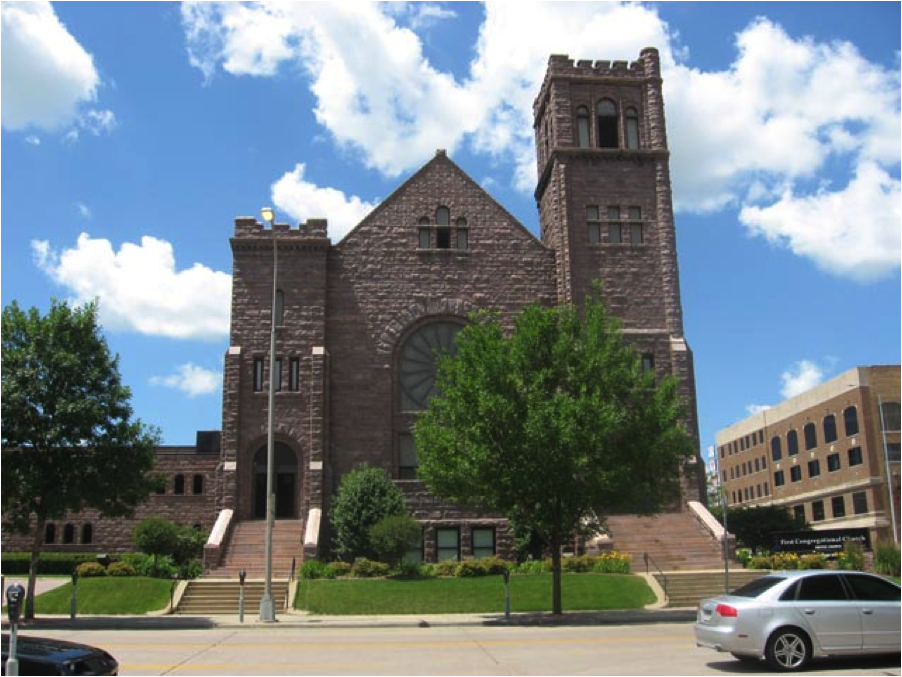
First Congregational Church, Sioux Falls, SD
Style: Romanesque Revival
Date: 1907-1909
More info: First Congregational United Church of Christ and GoHistoric.com
Photo source: Wikimedia Commons
So, clearly, architects working in Sioux Falls in the late 1800s and early 1900s were enamored of the Richardsonian Romanesque style. And they loved that quartzite!
But there also is great diversity in the architectural landscape of Sioux Falls. Carolyn Torma’s instructive article, quoted earlier, tells us that in the period from 1913 to 1940, “several entirely new styles such as Prairie School, park-building Rustic, and Art Deco emerged.” She further notes, “By World War I, South Dakota architects had fully accepted the classical revival styles, . . . including: Neo-Classicism, Renaissance Revival, Beaux Arts Classicism, Georgian, and Colonial Revival.” In the photos that follow, we’ll see examples of most of these styles in Sioux Falls.
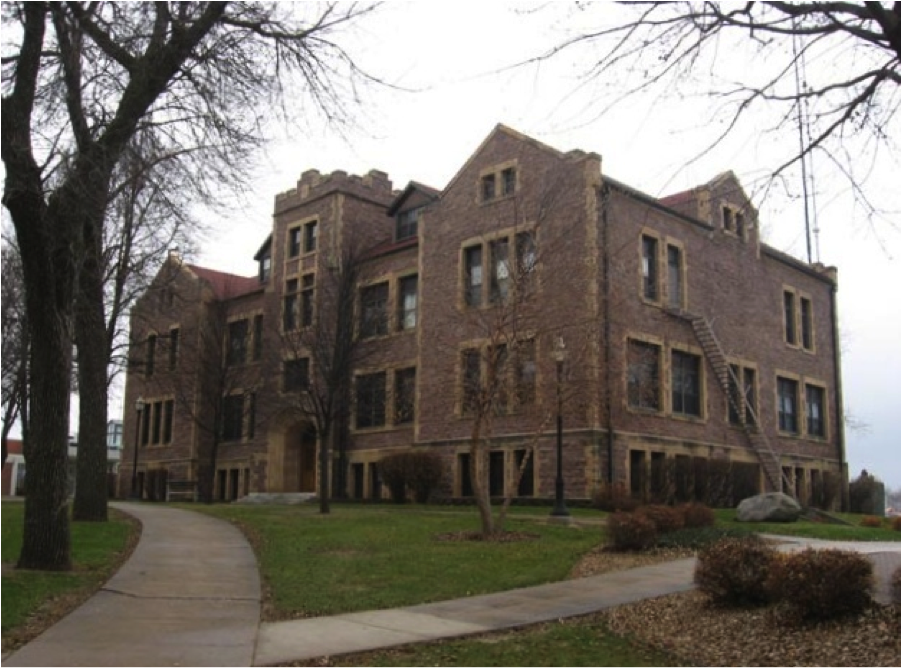
Jorden Hall, University of Sioux Falls, SD
Architect: Joseph Schwarz
Style: Gothic Revival
Date: 1908
More info: GoHistoric.com and Historic Campus Architecture Project
Photo source: Wikimedia Commons
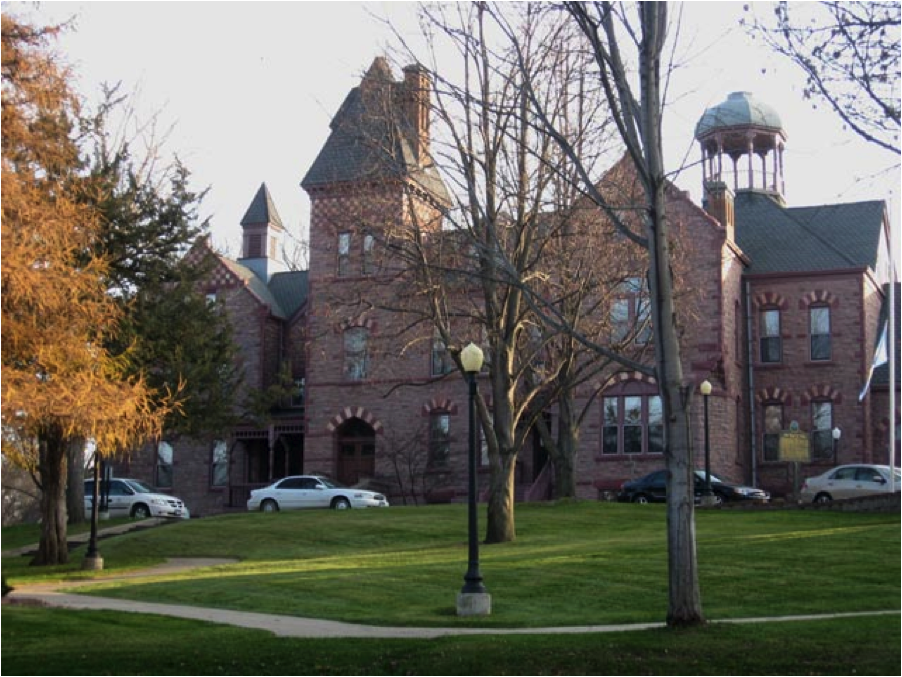
All Saints School, Sioux Falls, SD
Architect: Wallace L. Dow
Style: High Victorian Gothic
Date: 1884
More info: Jennifer Dumke, W.L. Dow: The Architect Who Shaped Sioux Falls, pp. 39-40; 52-54.
Photo source: Wikimedia Commons
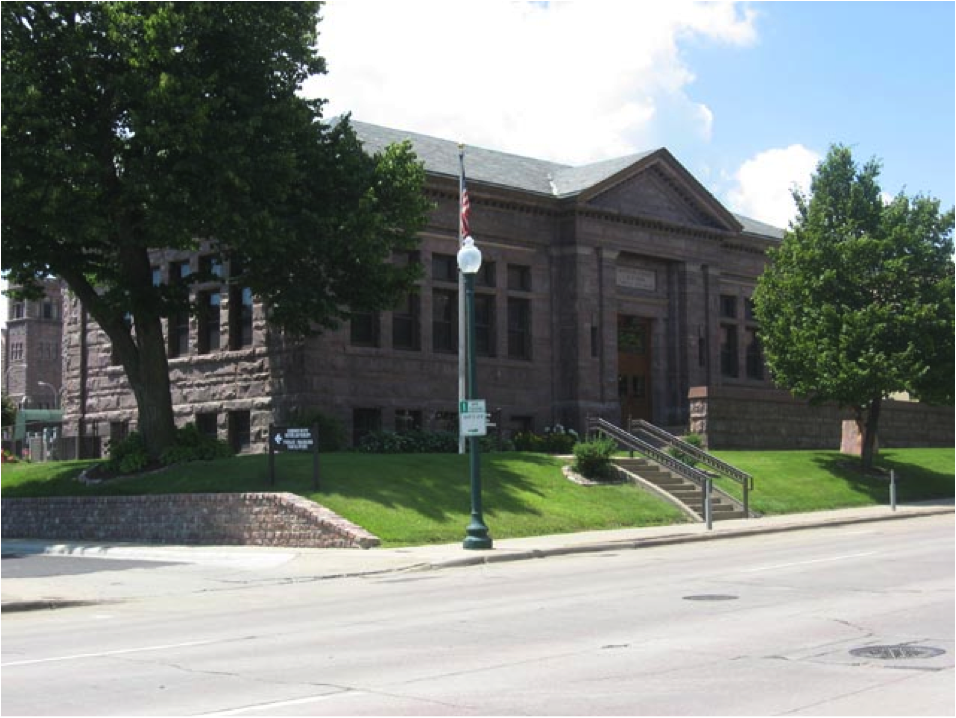
Carnegie Free Public Library, Sioux Falls
Architect: Joseph Schwarz.
Style: Classical Revival, using pink Sioux Quartzite
Date: 1913
More info: Carolyn Torma, pp. 158-159; Susan Richards, pp. 2-9.
Photo Source: Wikimedia Commons

Orpheum Theatre, Sioux Falls, SD
Style: Elements of Prairie style and Neo-Classical Revival
Date: Original old building on right: 1913
More info: For history, see here and here.
Photo Source: City of Sioux Falls

Security Bank Building, Sioux Falls
Architect: E. Jackson Casse Company (Chicago)
Style: Neo-classical; first steel skeletal-frame building in Sioux Falls
Date: 1917
More info: Carolyn Torma, pp. 159-160.
Interesting non-architectural fact: John Dillinger, the Depression-era American bank robber, robbed the Security National Bank of $49,500 on March 6, 1934.
Photo source: Wikimedia Commons
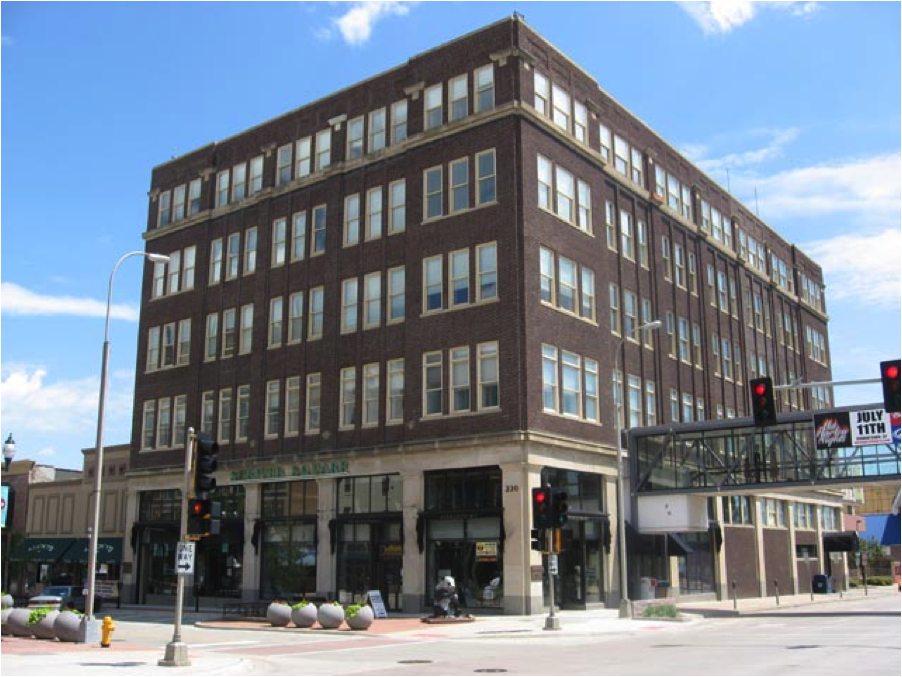
Shriver-Johnson Department-store Building
Architect: Firm of Perkins and McWayne
Style: Classical Revival
Date: 1918
More info: Carolyn Torma, p. 170; and Greetings from Sioux Falls
Photo Source: Wikimedia Commons
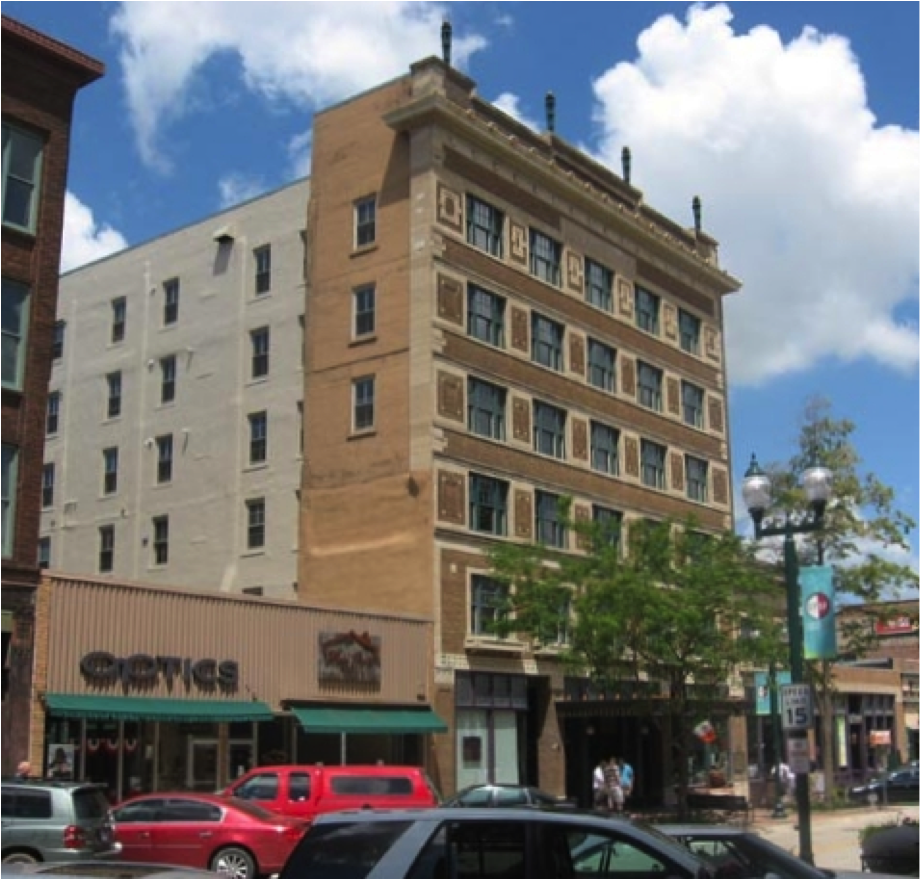
Carpenter Hotel, Sioux Falls, SD
Date: 1912
More info: Now luxury apartments, with storefront businesses at ground level. See here and here.
Photo source: Wikimedia Commons
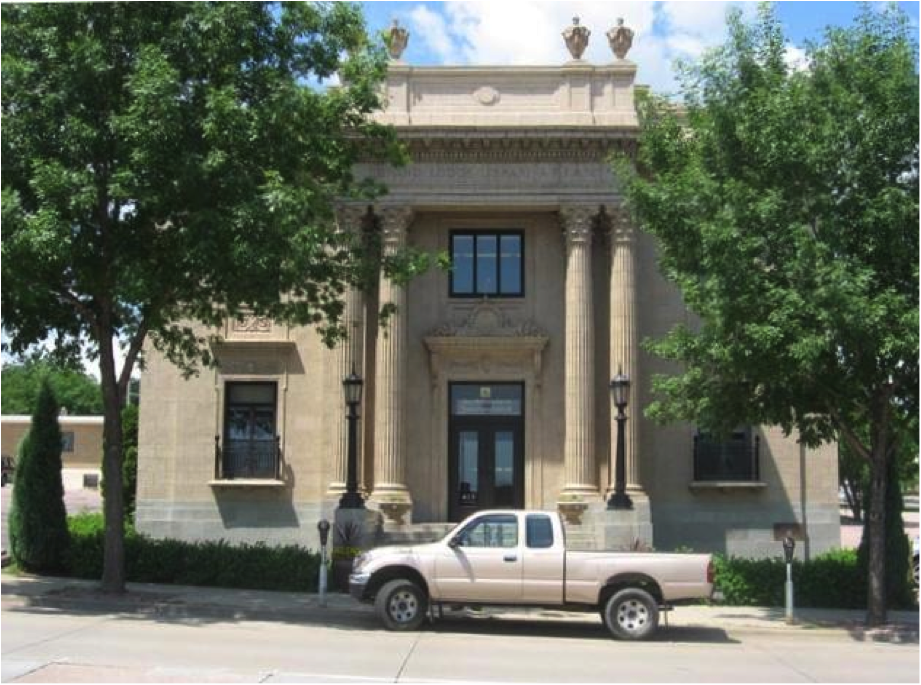
Grand Lodge and Library of the Ancient Free and Accepted Masons, Sioux Falls, SD (also known as the Sioux Falls Masonic Temple)
Architect: Hugill and Blatherwick
Style: Beaux Arts Classicism
Date: 1925
More info: Carolyn Torma, p. 166.
Photo source: Wikimedia Commons
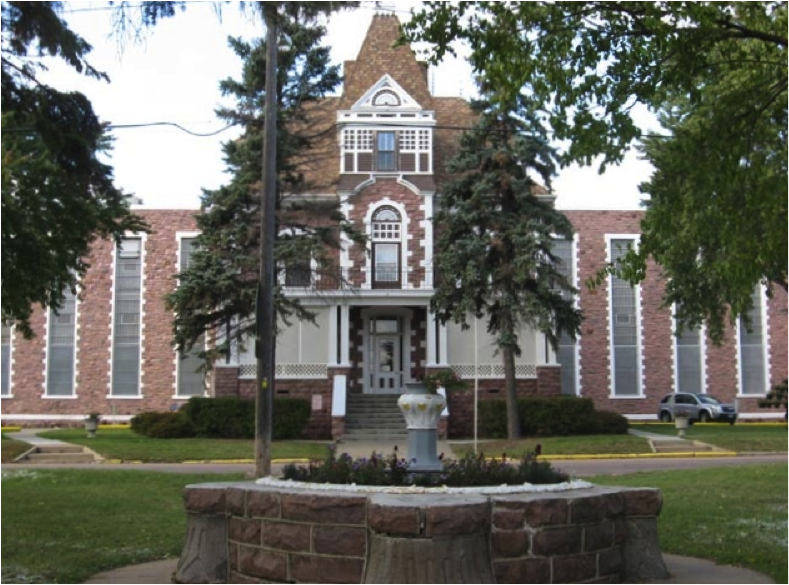
South Dakota State Penitentiary Historic Buildings, Sioux Falls, SD
Architect: Wallace L. Dow
Style: Italianate, Second Empire
More info: Jennifer Dumke, W.L. Dow: The Architect Who Shaped Sioux Falls, p. 29.
Photo source: Wikimedia Commons. Historical photos, here.
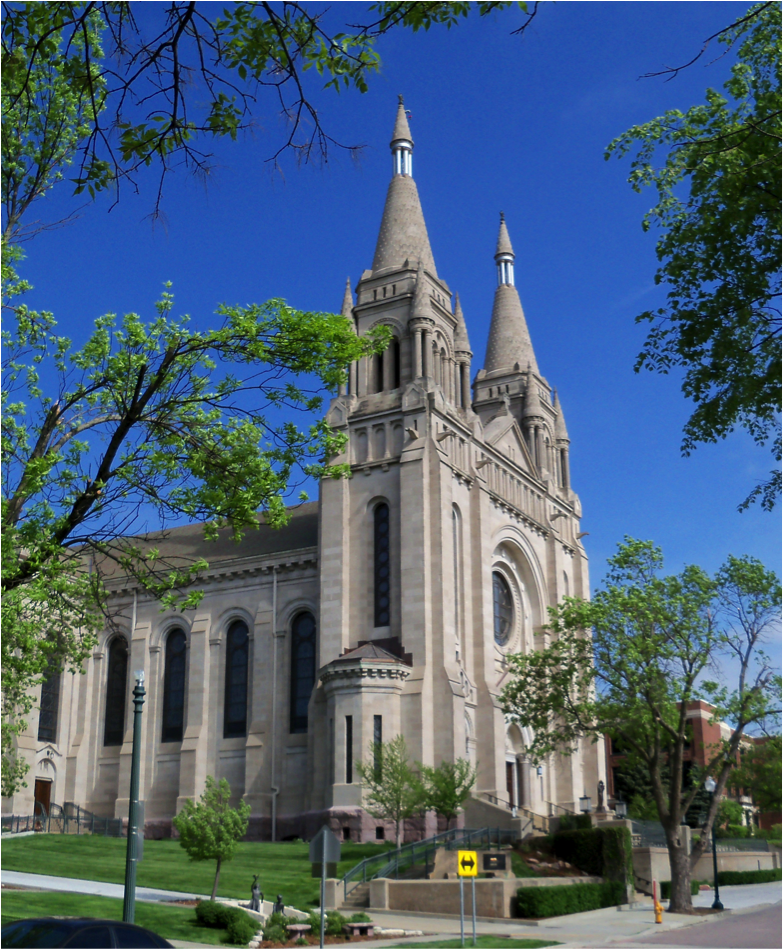
St. Joseph Cathedral, Sioux Falls, SD
Architect: Emmanuel Masqueray
Style: Blend of Romanesque and French Renaissance
Date: 1918-1919
More info: Wikipedia and
Photo source: Wikimedia Commons

Central Fire Station, Sioux Falls
Architect: Joseph Schwarz
Style: Features a Mediterranean Villa Tower; Renaissance Revival Details
Date: 1913
More info: Carolyn Torma, p. 172.
Photo source: Wikimedia Commons

L.D. William Funeral Home, Sioux Falls, SD
Architect: Firm of Perkins and McWayne
Style: Mediterranean Villa, with Italian Renaissance Revival features
Date: 1923
More info: Carolyn Torma, p. 172.
Photo source: Wikimedia Commons
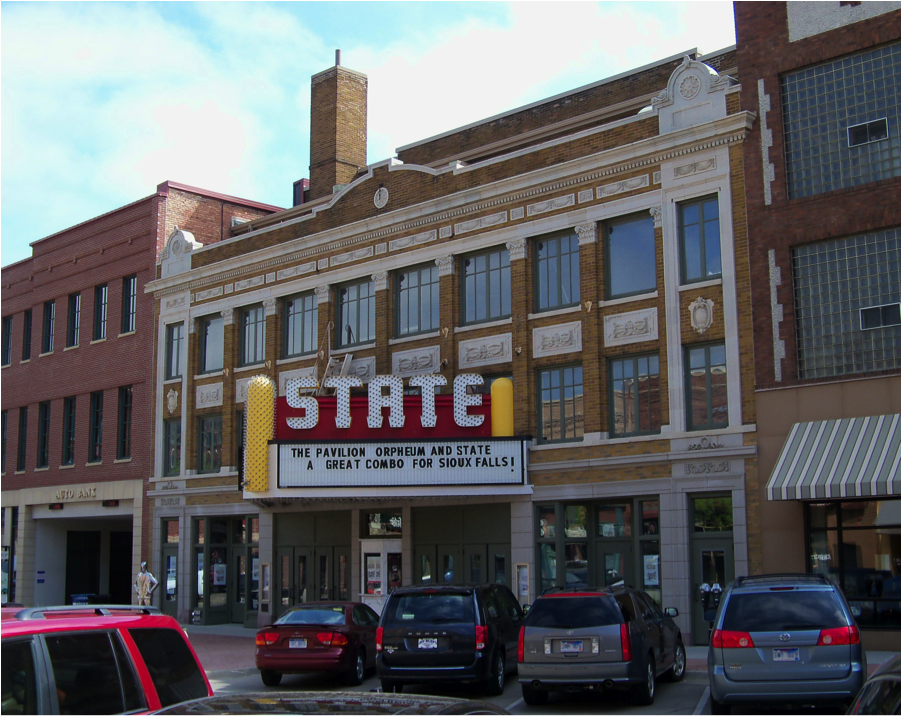
State Theatre, Sioux Falls, SD
Architects: Firm of Buechner and Orth
Style: Georgian, mixed with architectural details of the Renaissance Revival
Date: 1925
More info: Carolyn Torma, p. 168. Also, for a history of the State Theater and information about efforts to preserve it, see this issue of a newsletter from Preserve South Dakota, a historic-preservation organization.
Photo source: Wikimedia Commons
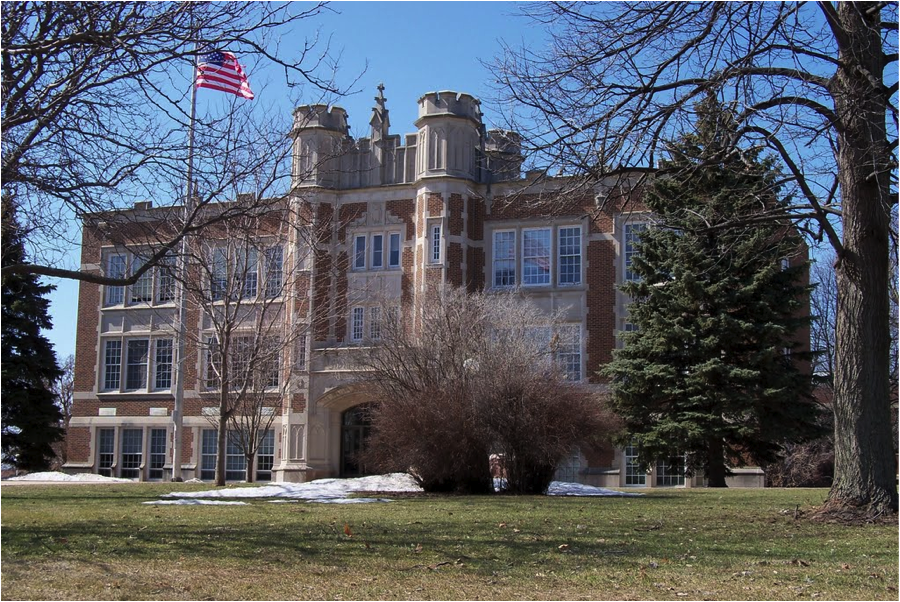
Administration Building, Augustana College, Sioux Falls, SD
Architect: Firm of Perkins and McWayne, Sioux Falls
Style: English Vernacular Revival (sometimes called Jacobethan)
Date: 1920
More info: Carolyn Torma, p.170
Photo source: Wikimedia Commons
_________________
Note to those interested in reading more about the architectural history of Sioux Falls, especially the period in the late 1880s and early 1900s when the visual identity of the city was being defined:
In addition to the useful articles cited above (Carolyn Torma and Alan Lathrop), there’s a new book coming on Tuesday, September 17, when the History Press of Charleston, SC, will be releasing Jennifer Dumke’s W.L. Dow: The Architect Who Shaped Sioux Falls. You can see parts of Dumke’s new volume through Google Books, here.
Some of Dow’s buildings that are shown above are the Old Minnehaha Courthouse, the South Dakota State Penitentiary, and the All Saints School.

